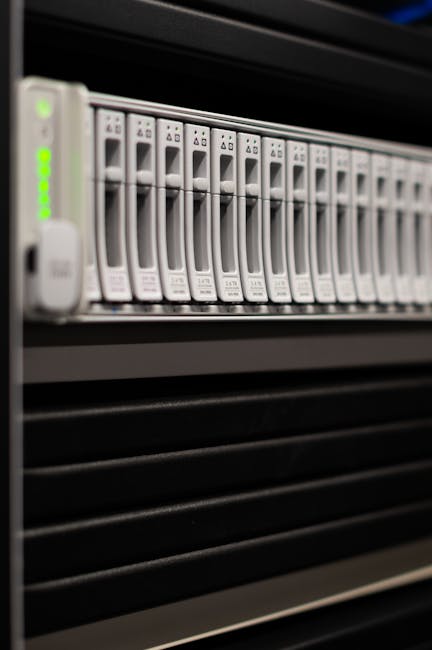Unlock encrypted content
Please enter your SSCE key to initiate on-the-fly decryption.
Decryption key: (Click cancel if you don't have the key)
Copied link to clipboard.
This feature is unavailable for free accounts. Upgrade now and enjoy all Premium benefits.
Go Premium!
This feature is unavailable for free accounts. Upgrade now and enjoy all Premium benefits.
Go Premium!
Please open this page in browser ( Google Chrome or Safari ) to use this feature.
Open In Browser
Data Accessibility on the Go: The Rise of Autonomous Driving, File Collaboration, and Edge Computing.
Random related video for this blog.
Copied share link to clipboard.
In today's fast-paced world, staying connected and having access to data anytime, anywhere has become a necessity. With the advent of technologies like autonomous driving, file collaboration, and edge computing, data accessibility on the go has reached new heights. In this article, we will explore how these technologies are revolutionizing the way we interact with data and the various benefits they offer.
Data Accessibility on the Go
Data accessibility on the go refers to the ability to access and manage data from any location, using any device. This has become increasingly important as more people rely on their smartphones, tablets, and other mobile devices for work, entertainment, and communication. Whether it's accessing files from the cloud, streaming music, or collaborating on a project, the need for seamless data accessibility has become paramount. One of the key drivers of data accessibility on the go is the rise of autonomous driving. With the development of self-driving cars, individuals can now access their files, collaborate with colleagues, and stream music while on the move. Autonomous vehicles are equipped with advanced connectivity features that allow passengers to stay connected to the internet, access cloud storage, and perform various tasks without compromising safety. Another important aspect of data accessibility on the go is file collaboration. In today's interconnected world, collaboration has become essential for businesses and individuals alike. Whether it's a team working on a project or friends sharing files, the ability to collaborate seamlessly is crucial. File collaboration platforms enable multiple users to access, edit, and share files in real-time, regardless of their location. This not only improves productivity but also enhances communication and teamwork.Edge Computing: Empowering Data Accessibility
Edge computing is a distributed computing paradigm that brings data processing closer to the source of data generation. Unlike traditional cloud computing, where datais processed in centralized data centers, edge computing leverages local devices and edge servers to process data closer to the end-users. This results in reduced latency, improved performance, and enhanced data accessibility. Edge computing plays a vital role in enabling data accessibility on the go. By processing data locally, edge devices can provide real-time access to critical information, without relying on a stable internet connection. For example, in autonomous driving, edge computing allows vehicles to process sensor data and make split-second decisions without relying on cloud infrastructure. This ensures that the data required for driving decisions is readily available, even in remote areas or areas with poor network coverage. Furthermore, edge computing is also instrumental in data deduplication, a technique that eliminates duplicate copies of data to optimize storage capacity and reduce network bandwidth usage. By performing deduplication at the edge, unnecessary data transfers to the cloud can be avoided, resulting in faster file transfers and improved data accessibility.
The Uprising of Artificial Intelligence (AI) and Biotechnology
The uprising of artificial intelligence (AI) and biotechnology is yet another significant factor contributing to data accessibility on the go. AI-powered technologies are becoming increasingly integrated into our daily lives, enabling personalized services and experiences. For instance, AI algorithms can analyze user preferences and provide tailored music recommendations, ensuring a seamless music streaming experience on the go. Biotechnology, on the other hand, is revolutionizing healthcare and personalized medicine. With advancements in biotechnology, individuals can access their medical records, monitor their health, and even receive personalized treatments remotely. This not only improves patient outcomes but also enhances data accessibility, allowing individuals to have better control over their health data.Conclusion
In conclusion, data accessibility on the go has become a crucial aspect of our modern lifestyles. Technologies like autonomous driving, file collaboration, edge computing, and the uprising of AI and biotechnology have played a significant role in enabling seamless access to data anytime, anywhere. As these technologies continue to evolve, we can expect even greater advancements in data accessibility, empowering individuals and businesses to stay connected and productive in an increasingly mobile world.Frequently Asked Questions (FAQs)
Question: How can edge computing improve data accessibility on the go?
Answer: Edge computing brings data processing closer to the end-users, reducing latency and improving performance. This ensures real-time access to critical information, even in areas with poor network coverage, enhancing data accessibility on the go.
Question: How does file collaboration enhance data accessibility?
Answer: File collaboration platforms enable multiple users to access, edit, and share files in real-time, regardless of their location. This improves productivity and communication, allowing seamless data accessibility for collaboration purposes.
Question: What role does AI play in data accessibility on the go?
Answer: AI algorithms analyze user preferences and provide personalized services, such as music recommendations, ensuring a seamless data accessibility experience on the go.
By Amelia Isabella
Email: [email protected]
Related
Efficient File Transfer Protocols: Revolutionizing Data Transfer in the Digital...
July 23, 2023
Read More
Highly Available Cloud Infrastructure: Ensuring Data Security and Accessibility
July 23, 2023
Read More
Parallel Universes: Exploring the Limitless Potential of Data Storage and...
July 23, 2023
Read More
Automatic Backup and Quantum Encryption: Enhancing Data Security and Accessibility
July 23, 2023
Read More
Futuristic File Management: Unlocking the Potential of Edge Computing and...
July 23, 2023
Read More
Compliance-Ready Storage Solutions: Unlocking the Potential of Edge Computing
July 23, 2023
Read More
Secure Cloud Storage: Protecting Your Data with Advanced Encryption Algorithms
July 23, 2023
Read More
Popular
The Future of Technology: Exploring Biohacking, Space Tourism, and Digital...
November 23, 2025
Read More
Exploring the Benefits of Cloud Storage and Innovative Technologies in...
November 26, 2025
Read More
The Future of Digital Transformation: Exploring Smart Homes, Efficient File...
November 30, 2025
Read More
Latest
The Future of Digital Transformation: Exploring Smart Homes, Efficient File...
November 30, 2025
Read More
Exploring the Benefits of Cloud Storage and Innovative Technologies in...
November 26, 2025
Read More
The Future of Technology: Exploring Biohacking, Space Tourism, and Digital...
November 23, 2025
Read More
The Future of File Sharing: Streamlined Workflows for Photographers and...
November 19, 2025
Read More
Exploring the Intersection of Technology: From Cybersecurity to Augmented Reality...
November 16, 2025
Read More
The Future of File Management: Embracing Edge Computing and Efficient...
November 12, 2025
Read More
The Future of File Sharing: Exploring User-Friendly Solutions and Data...
November 5, 2025
Read More
The Future of Cloud Storage: How FileLu Empowers Creative Professionals...
November 2, 2025
Read More
The Future of Autonomous Technologies: Innovations in Robotics, File Sharing,...
October 29, 2025
Read More
Emerging Technologies Revolutionizing File Management: From Li-Fi to Robust Collaboration...
October 26, 2025
Read More
Emerging Technologies: Exploring the Impact of File Access Auditing, Genetic...
October 19, 2025
Read More
The Future of Data Storage: Exploring Advanced Encryption, Mobile Integration,...
October 5, 2025
Read More
Exploring the Future of Data Management: Security, Efficiency, and Cognitive...
September 28, 2025
Read More
Revolutionizing Data Management: Innovations in Storage, Security, and Sustainable Technology.
September 24, 2025
Read More

















